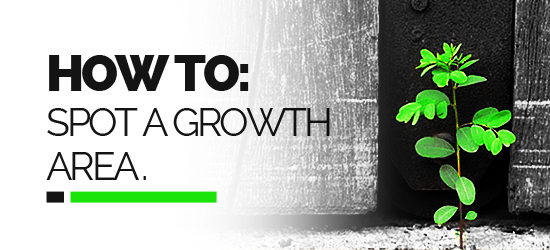How to: Spot a Growth Area
Cameron Fisher | 1st May, 2016

The property investors hotspot
For decades smart property investors have been obsessing over which suburbs are going to become the next ‘hotspots’ – and all this obsessing has appeared to pay off for some.
Identifying a property hotspot is about timing in the market, if you time you entry well enough you may experience strong capital growth literally from the day you settle and this strong growth may continue over time – allowing you to quickly build your property portfolio.
Of course, there is always risk associated with property investing and by the time you hear about a new property hotspot it’s usually at the peak of the cycle.
So we’re going to give you a few expert tips on how spot a growth area and maximise your investment potential.
Read more: 5 Things to consider when buying an investment property
1. Look for areas experiencing urban renewal
Shifts in an urban community lifestyle and an increasing share of wealthier residents and/or businesses is a good sign that a suburb is likely to become a property hotspot.
These areas in the past may have been less desirable to homeowners and investors however as a city grows in population and expands its need for housing, areas within close proximity to central business districts generally becomes more attractive to external residents and smart investors – this is also referred to as gentrification.
- Look at the affordable areas in a region you’re interested in;
- Check out how the property prices have moved in the past two to three years;
- If prices have grown steadily, look at the demographics. An increasing number of young residents with good income is a solid indication that the suburb is about to gentrify;
- Look for signs of new houses or renovated homes springing up in the area;
- Look for new cafes or retailers opening in the suburb
Related: Choosing A Career In Real Estate
2. Look for the ripple effect
Many homeowners and investors that cannot afford to purchase in a high growth area (perhaps due to timing in the market) will take a closer look at the surrounding suburbs creating a ripple like effect to property values – meaning the property values of the surrounding suburbs are also likely to increase.
As a general rule of thumb when buying in major markets like the capital cities is to purchase property within a 10-15klm radius from the CBD, as the city grows the ripple effect is likely to flow out the these inner city suburbs.
Explore supply and demand, demographics, and prices over time using realestate.com.au’s dedicated Investor section
3. Does demand outweigh supply?
Demand for a particular area or type of property within an area is a key driver for property growth. If there a more properties for sale than there are buyers currently looking, the value of these properties is likely to decrease or stay flat for an extended period of time or until the demand catches up.
Live example: Southbank in Victoria currently has 327 two bedroom apartments on the market where as Albert Park in Victoria (located less than 3 klms from Southbank) has only 9 Victorian era properties on the market.
(Source: realestate.com.au property search March 2015)
Now let’s look at the growth of median property prices over the past decade.
Albert Park Median House Price in 2005 – $681,000
Albert Park Median House Price in 2015 – $1,490,000
Southbank Median Unit Price in 2005 – $392,000
Southbank Median Unit Price in 2015 – $580,000
(Source: Price Finder suburb comparison report March 05 to March 15)
Although these are two completely separate property types – which is exactly my intended point – which property or property type is more in demand?
So based on the above factual evidence, it is obvious that if you invested in a house located in Albert Park a decade ago you would have, on average, experienced significantly more capital growth than if ten years ago you purchased an apartment in Southbank – this is supply and demand at its finest.
Trackbacks & Pingbacks
-
[…] Related: How to Spot a Growth Area […]
-
[…] Related: How to: Spot a Growth Area […]
-
[…] Related: How to: Spot a Growth Area […]
-
[…] Related: How to: Spot a Growth Area […]
-
[…] Related: How to: Spot a Growth Area […]
-
[…] Related: How to: Spot a Growth Area […]
-
[…] Related: How to: Spot a Growth Area […]






7 Responses to “How to: Spot a Growth Area”